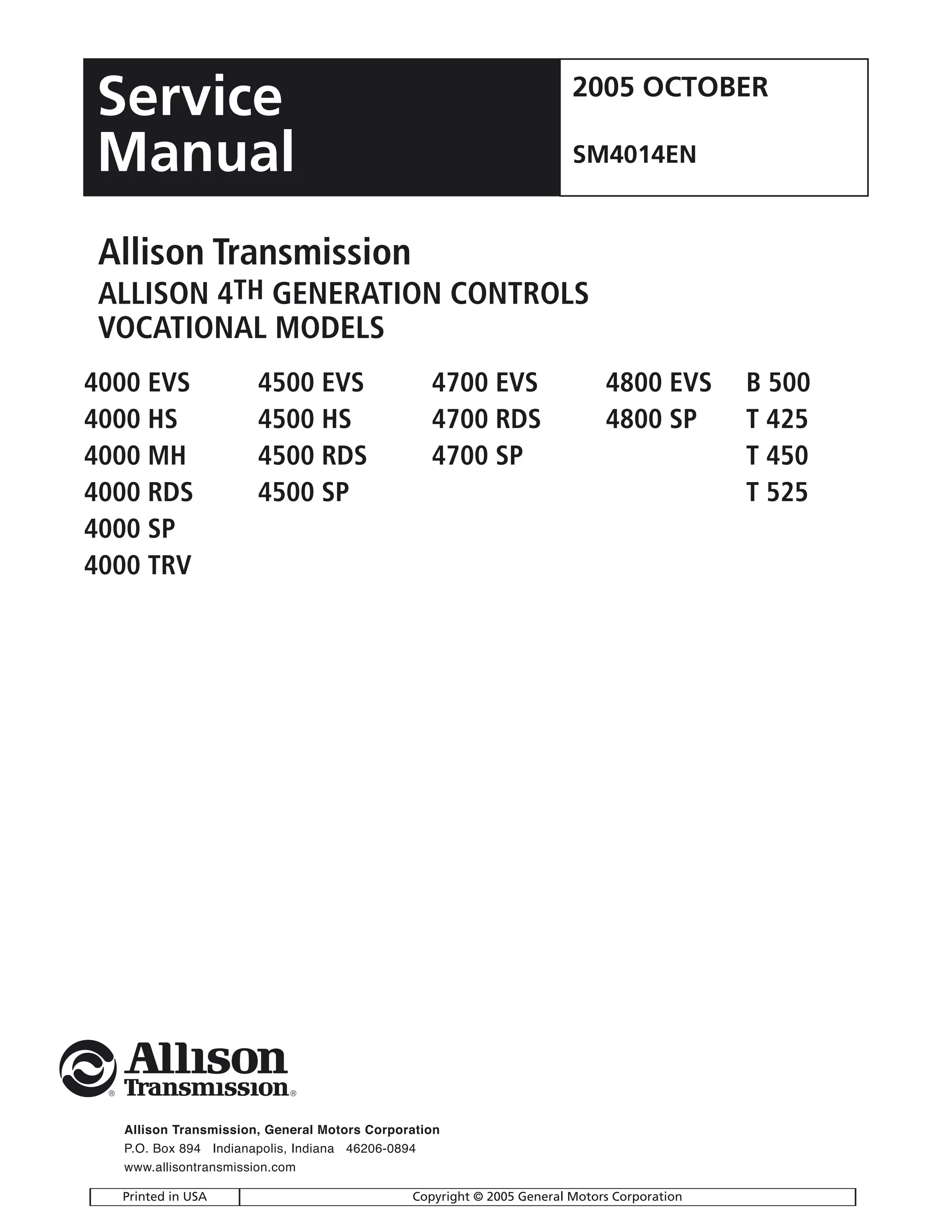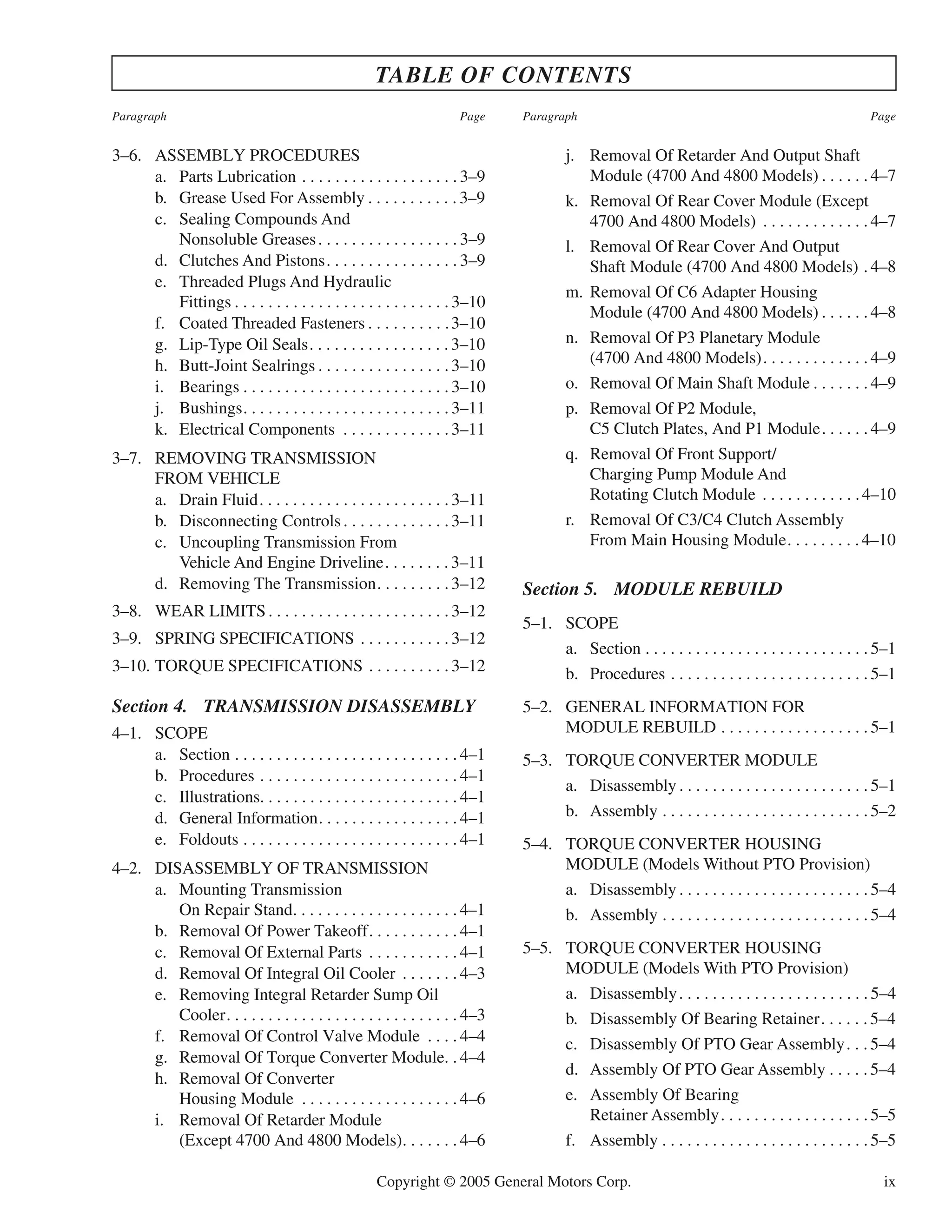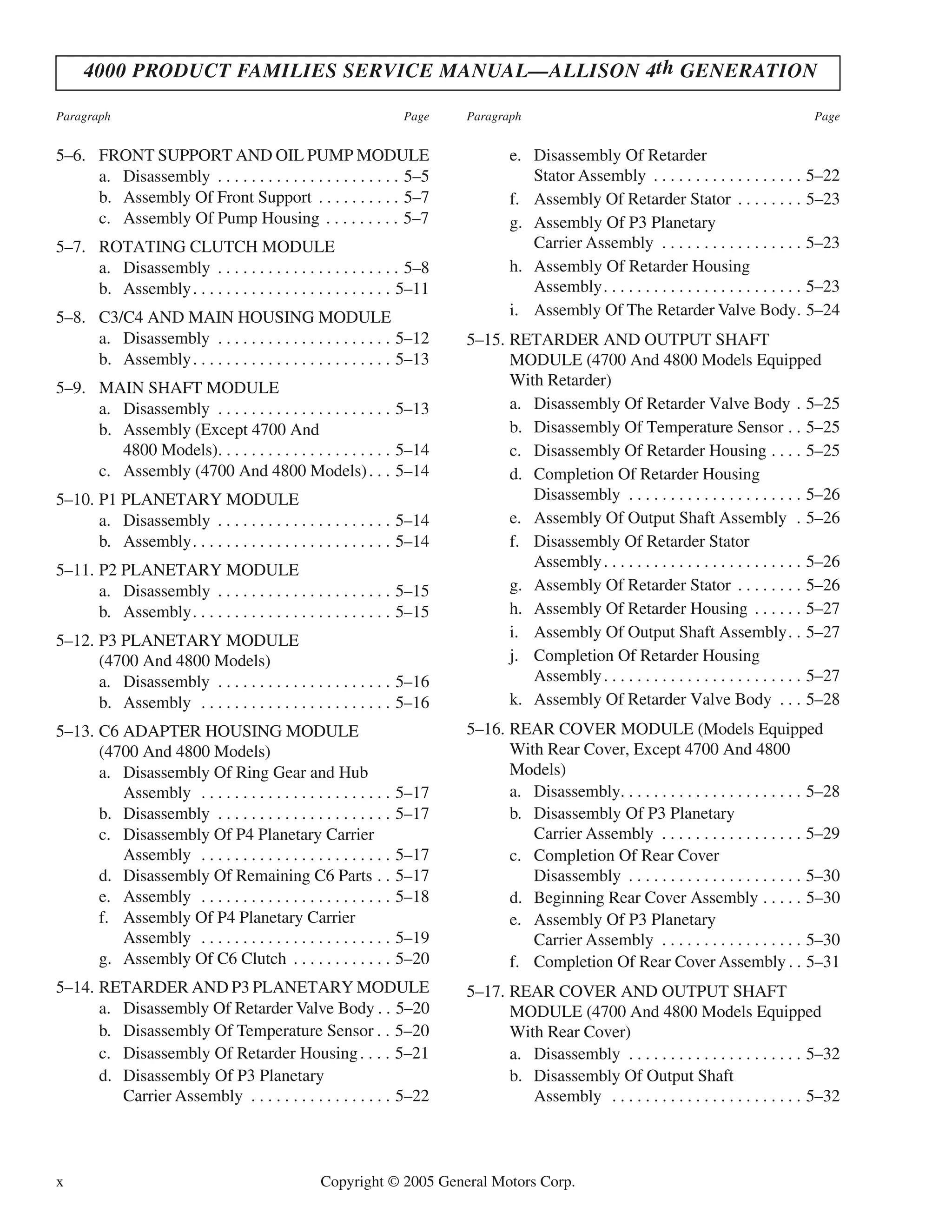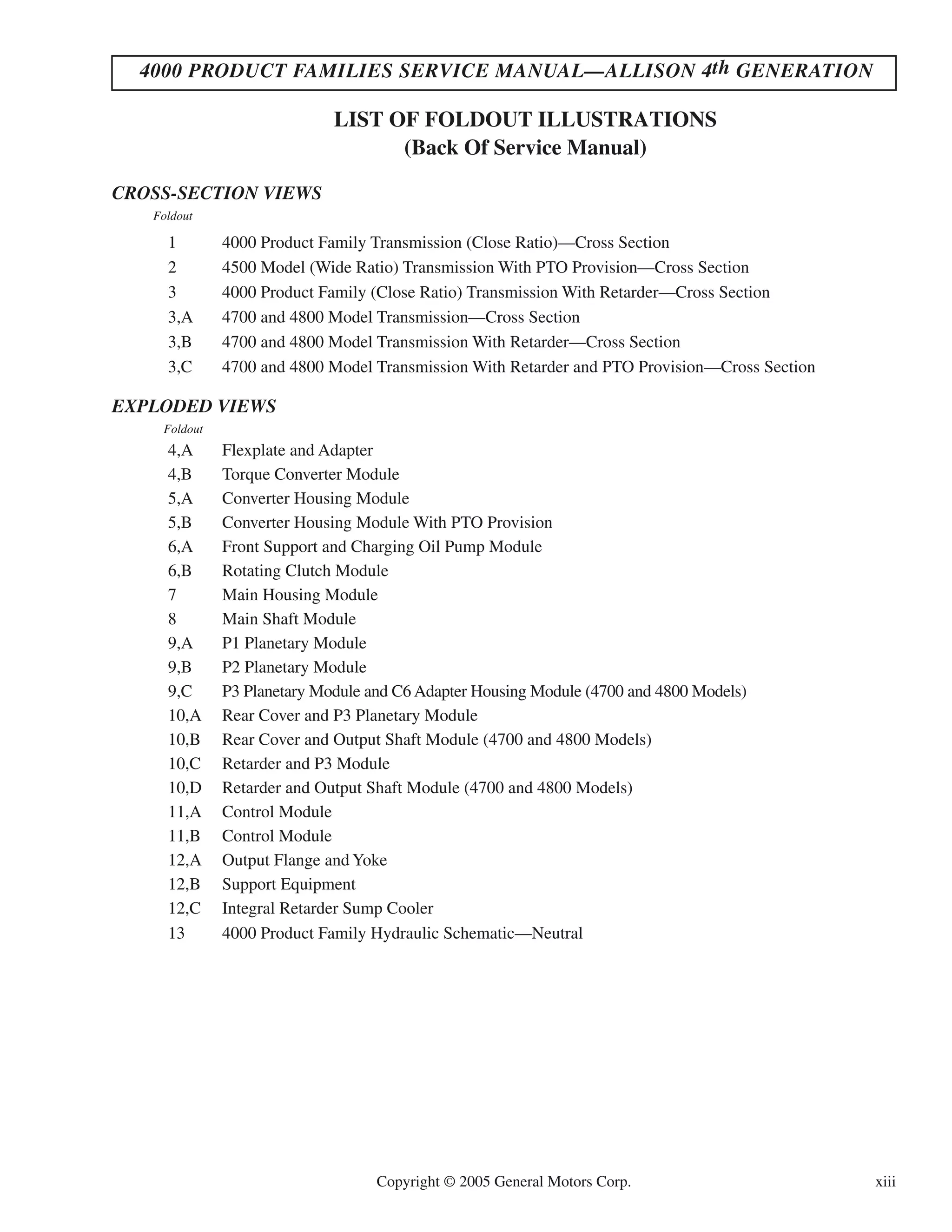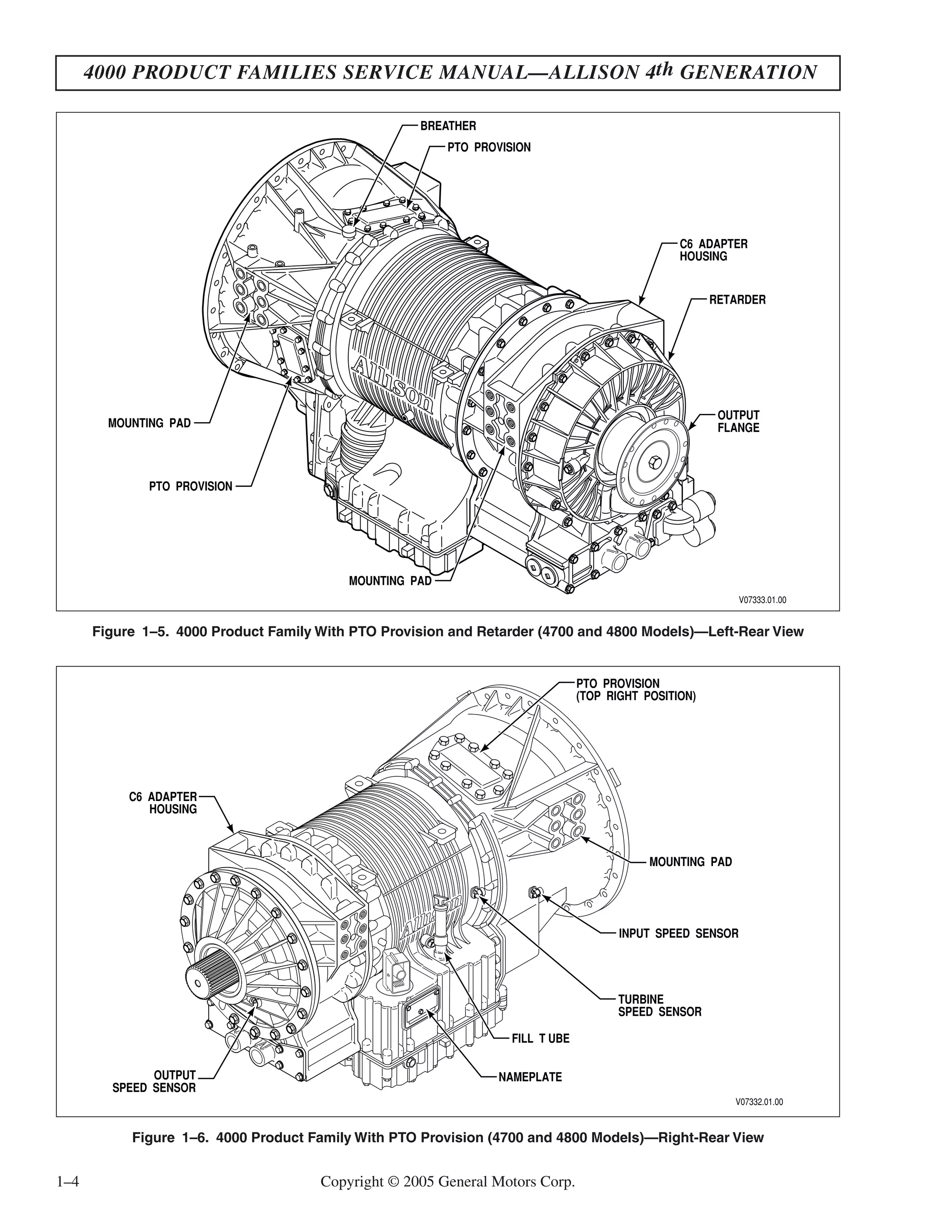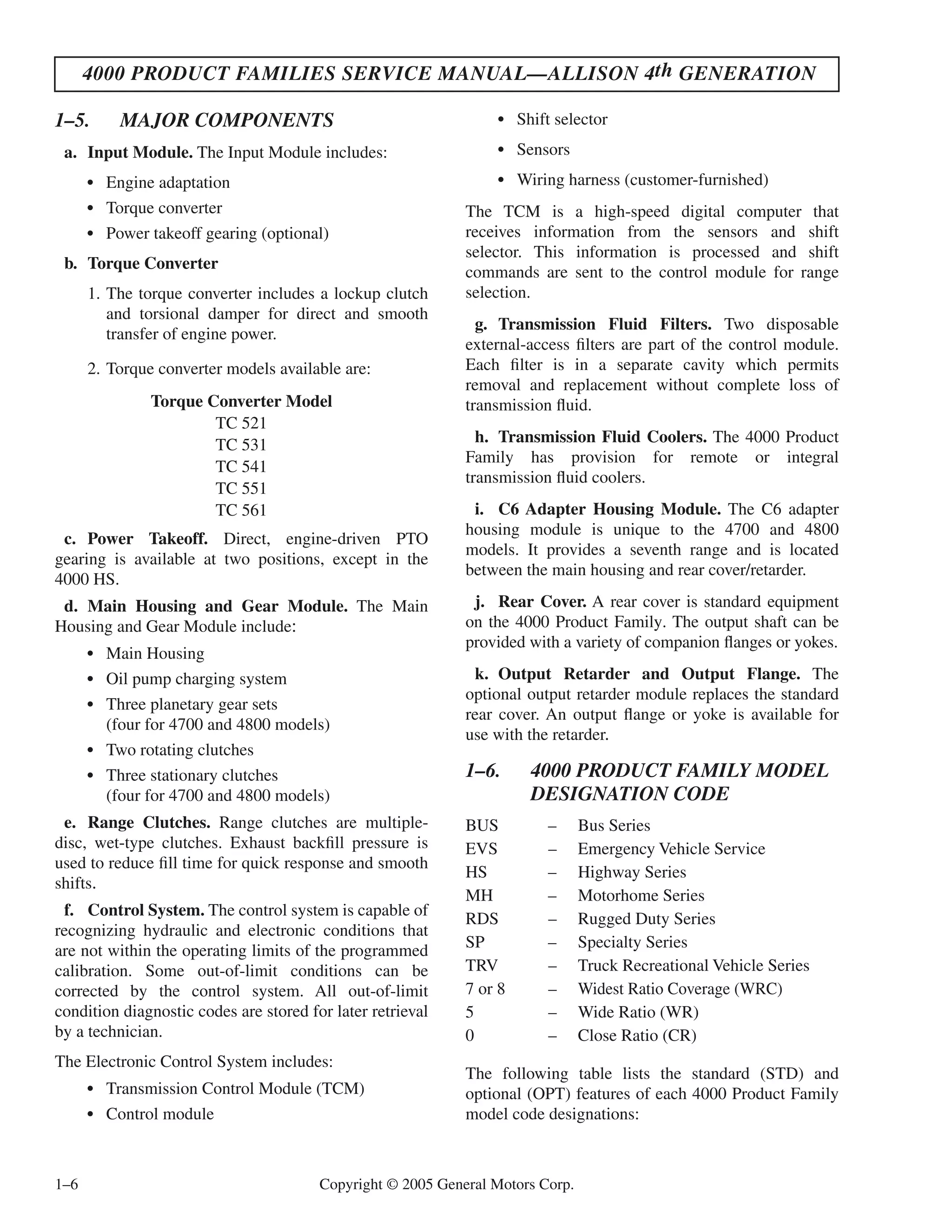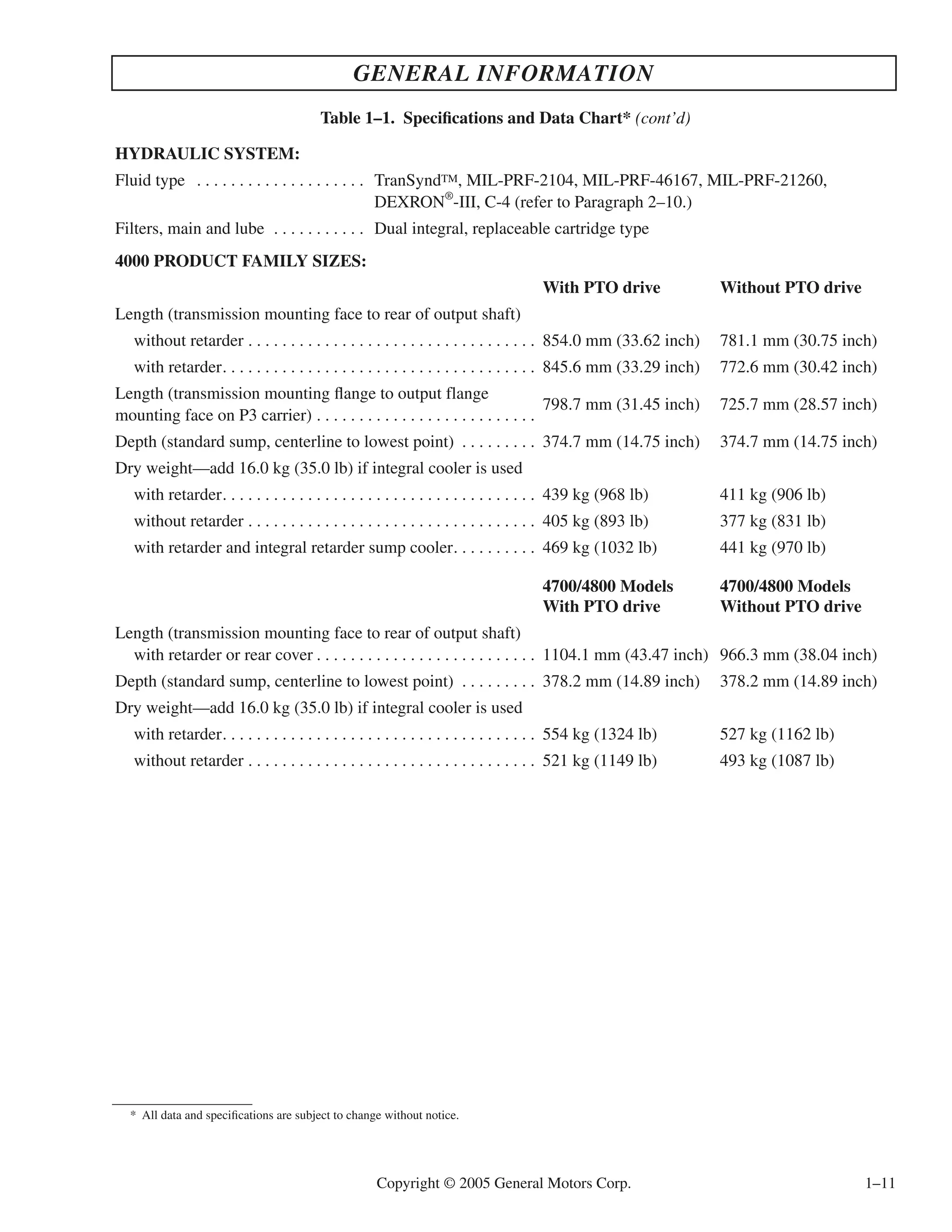The document is a service manual for Allison Transmission's 4th generation controls, detailing various models and their service procedures. It covers important safety warnings, operational guidelines, diagnostic methods, and maintenance recommendations to ensure safe and effective use of the transmission systems. Additionally, it provides comprehensive information on components, fluid maintenance, and special tools necessary for servicing the transmissions.
